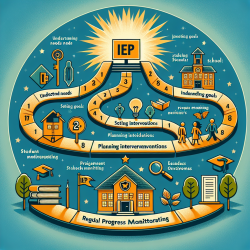Introduction to the Language Access Profile Tool (LAPT)
In the realm of speech-language pathology, understanding the language environment of Deaf and Hard of Hearing (DHH) children is crucial. The recent study titled "Estimating Early Language Input in Deaf and Hard of Hearing Children With the Language Access Profile Tool" introduces the Language Access Profile Tool (LAPT) as a promising alternative to the DHH Language Exposure Assessment Tool (D-LEAT). This tool is designed to provide practitioners with a user-friendly method to estimate the language input experienced by DHH children, particularly during their formative years.
Why Language Input Matters
Language input is a fundamental aspect of a child's development. For DHH children, the type and quality of language exposure can significantly impact their language acquisition and overall communication skills. The LAPT offers a structured approach to quantify this input, allowing practitioners to tailor interventions more effectively.
Understanding the LAPT
The LAPT simplifies the process of gathering language input data by asking caregivers to estimate the proportion of language exposure across eight categories. These categories include:
- Limited Access
- English without signs
- American Sign Language (ASL)
- Sign-supported speech
- Cued Speech
- Manually Coded English
- Other spoken languages
- Other/unknown
By distributing 100% of the child's language exposure across these categories, the LAPT provides a comprehensive view of the child's language environment.
Key Findings from the Research
The study demonstrated that the LAPT has strong test-retest reliability and convergent validity with the D-LEAT, making it a reliable tool for practitioners. It was found to be particularly effective for children aged 3 to 12 years, offering a viable alternative for estimating language input without the complexity of the D-LEAT.
Implications for Practitioners
For practitioners working with DHH children, the LAPT can be an invaluable resource. It allows for the collection of detailed language histories, which are essential for developing effective intervention strategies. Understanding a child's language access profile can guide clinicians in setting realistic goals and tailoring interventions to meet the child's unique needs.
Encouraging Further Research
While the LAPT provides a solid foundation for assessing language input, further research is encouraged to explore its predictive validity concerning language outcomes. By continuing to refine and validate tools like the LAPT, practitioners can ensure they are using the most effective methods to support the language development of DHH children.
To read the original research paper, please follow this link: Estimating Early Language Input in Deaf and Hard of Hearing Children With the Language Access Profile Tool.










